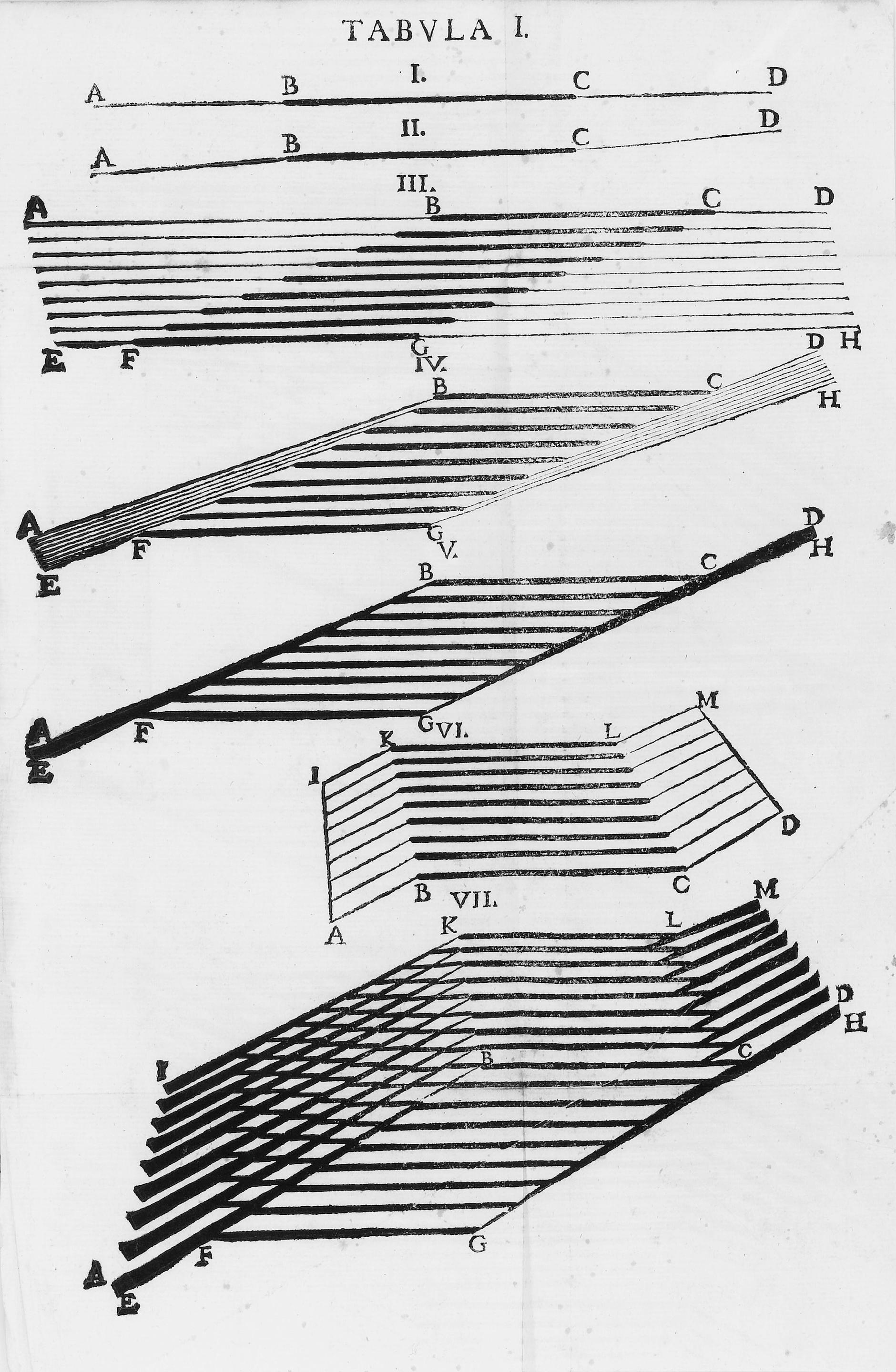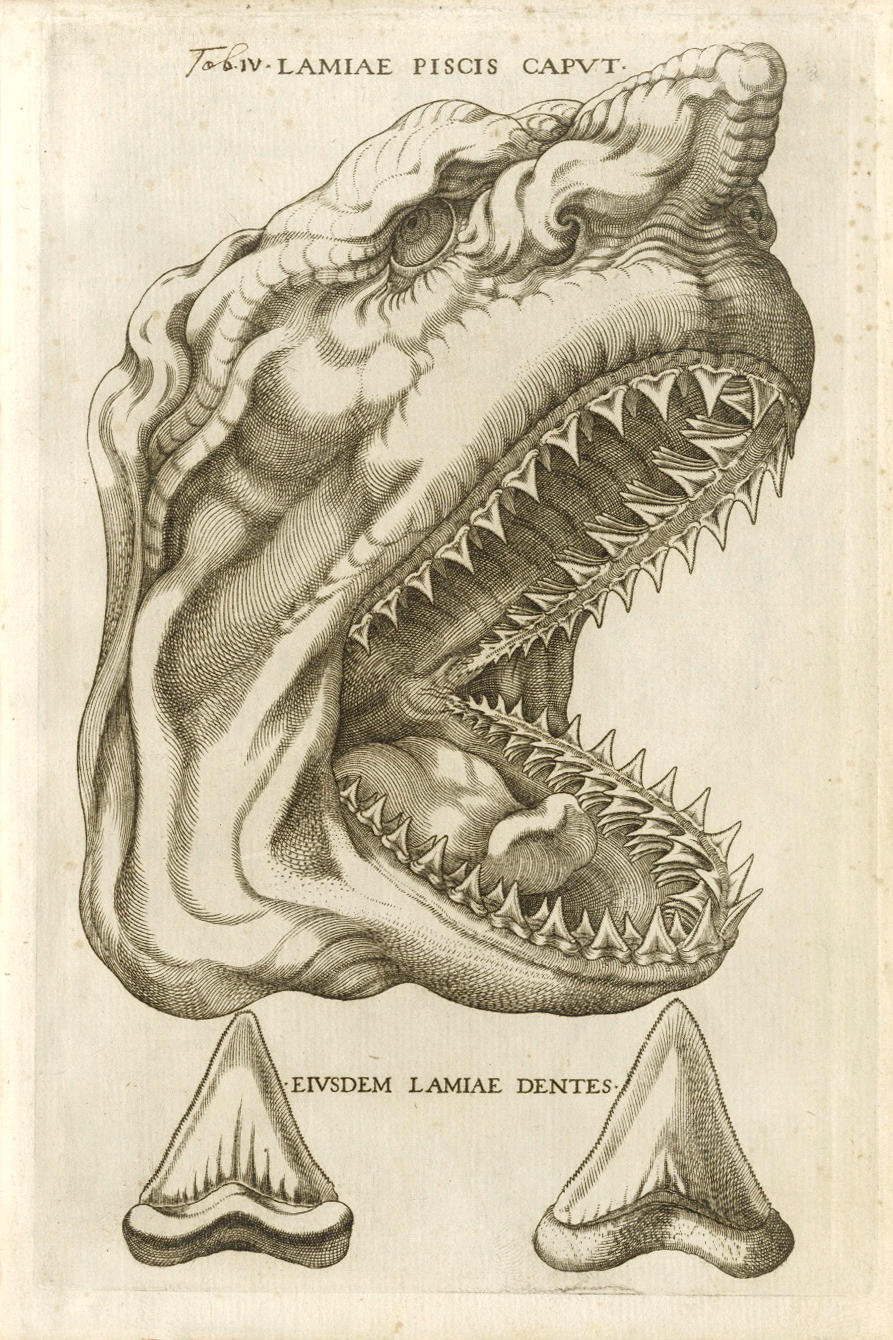STENO, Nicolaus (i.e. Niels STENSEN, 1638-1687). De solido intra solidum naturaliter contento dissertationis prodromus . Florence: 'ex typographia sub signo stellae', 1669. 4° (240 x 170mm). Title printed in red and black with engraved vignette. Folding plate with engraved diagram and explanatory letterpress, woodcut head- and tailpieces and initial. Preliminary blank π1 and errata leaf K4. (Variable light spotting, a little heavier on the plate, lightly damp-marked on the margins and plate.) 18th-century Italian vellum (extremities lightly rubbed, covers a little damp-marked), red-speckled edges, modern slipcase. FIRST EDITION OF STENO'S 'GREAT WORK ... WHICH OUTLINES THE PRINCIPLES OF MODERN GEOLOGY ... The book presents only the outlines of a discussion, yet almost every sentence or paragraph contains new insights' ( DSB XIII, p.34). Although brief in form -- the work contains 78 pages of text and one folding plate, and was only intended to be an introduction to a larger work that was never written -- the impact of De solido was far greater than its modest size suggests. Born in Copenhagen, and educated at the universities of Copenhagen and Leiden, Steno went to Italy in 1666, where he travelled to Florence, becoming physician to Grand Duke Ferdinand II (the dedicatee of the present work). Although a medical doctor by education and occupation (and later a celebrated anatomist), Steno was also deeply interested in geology and mineralogy. The research on which the present work is based was prompted by his dissection of the head of a large Carcharodon rondeletii caught near Leghorn. Investigating the teeth, Steno became aware of similarities with glossopetra (or tongue-stones) which were fossilised teeth generally considered to be types of stones, but were recognised by Steno as fossils. These researches, coupled with a geological analysis of the earth's crust in Tuscany, were published as De solido , in which he concluded that fossils had an animate origin (as Leonardo da Vinci and Fracastoro had believed); that rock formations had volcanic, chemical or mechanical causes and that stratigraphic analysis could establish a chronology of those formations; and that six categories of stratification (illustrated in the folding plate) could be identified. The work also includes 'the first formulated crystallography' (Dibner Heralds ). Dibner Heralds 90; Grolier Science 96; Norman 2013; PMM 151; Waller 12170.
STENO, Nicolaus (i.e. Niels STENSEN, 1638-1687). De solido intra solidum naturaliter contento dissertationis prodromus . Florence: 'ex typographia sub signo stellae', 1669. 4° (240 x 170mm). Title printed in red and black with engraved vignette. Folding plate with engraved diagram and explanatory letterpress, woodcut head- and tailpieces and initial. Preliminary blank π1 and errata leaf K4. (Variable light spotting, a little heavier on the plate, lightly damp-marked on the margins and plate.) 18th-century Italian vellum (extremities lightly rubbed, covers a little damp-marked), red-speckled edges, modern slipcase. FIRST EDITION OF STENO'S 'GREAT WORK ... WHICH OUTLINES THE PRINCIPLES OF MODERN GEOLOGY ... The book presents only the outlines of a discussion, yet almost every sentence or paragraph contains new insights' ( DSB XIII, p.34). Although brief in form -- the work contains 78 pages of text and one folding plate, and was only intended to be an introduction to a larger work that was never written -- the impact of De solido was far greater than its modest size suggests. Born in Copenhagen, and educated at the universities of Copenhagen and Leiden, Steno went to Italy in 1666, where he travelled to Florence, becoming physician to Grand Duke Ferdinand II (the dedicatee of the present work). Although a medical doctor by education and occupation (and later a celebrated anatomist), Steno was also deeply interested in geology and mineralogy. The research on which the present work is based was prompted by his dissection of the head of a large Carcharodon rondeletii caught near Leghorn. Investigating the teeth, Steno became aware of similarities with glossopetra (or tongue-stones) which were fossilised teeth generally considered to be types of stones, but were recognised by Steno as fossils. These researches, coupled with a geological analysis of the earth's crust in Tuscany, were published as De solido , in which he concluded that fossils had an animate origin (as Leonardo da Vinci and Fracastoro had believed); that rock formations had volcanic, chemical or mechanical causes and that stratigraphic analysis could establish a chronology of those formations; and that six categories of stratification (illustrated in the folding plate) could be identified. The work also includes 'the first formulated crystallography' (Dibner Heralds ). Dibner Heralds 90; Grolier Science 96; Norman 2013; PMM 151; Waller 12170.











Testen Sie LotSearch und seine Premium-Features 7 Tage - ohne Kosten!
Lassen Sie sich automatisch über neue Objekte in kommenden Auktionen benachrichtigen.
Suchauftrag anlegen